August 16, 2023: Palomino Butte Roundup Concludes, 192 Wild Horses Captured
Today, I met BLM at 5 am at the Burns district office. They established a new trap site about 17 miles west of Burns. I was the sole observer present. The morning began with heavy smoke, which limited visibility for the first hour or so. Temperatures ranged from the low 70s to the mid to upper 90s by the end of the roundup. At 2:05 pm, when the roundup concluded, the temperature at Burns Municipal Airport was recorded as 98.6 degrees. Please note that our observation location is situated 24 miles southwest, so temperatures may differ. It was extremely hot, needless to say.
At 7:20 am, the first group of 8-9 horses arrived. Just before reaching the catch pen, they paused momentarily but soon entered the trap. One palomino horse turned around and swiftly ran out of the jute without hesitation. The pilot circled back while the Judas' horses were brought out again. I assume an attempt was made to capture the palomino but it was unsuccessful. The horses were loaded onto the trailer by 7:40 am and transported directly to the corrals.
As time passed, the helicopter searched for more horses. Suddenly, we heard a horse calling out for its family from close behind us. Due to the dense trees, it was challenging to locate him. I walked around, but he was nowhere in sight. At 8:50 am, we spotted the helicopter approaching from the west. It seemed to have come quite close to the road where our vehicles were parked. Then, it circled around the hill behind us, and by 9:10 am, all horses entered the trap site and were loaded within 10 minutes. This particular band consisted of only 5 horses.
At 10:10 am, a larger group estimated to be around 18 horses was seen near the trap site. They cooperated and ran straight into the trap at 10:15 am. By 10:40 am, the horses were sorted and loaded onto the trailer. An hour later, the same trailer returned to pick up two foals.
By 12:45 pm, when the temperature was soaring, 7 horses were herded into the trap. At 1:10 pm, another 8 horses entered the trap. Finally, at 2:00 pm, the last band of 4 horses came in. The heat was unbearable. After this run, we were informed that the roundup had concluded, so we made our way to the corrals where I observed the last trailer load for the day. One foal was loaded at the back of the trailer for safety reasons, but refused to jump off when the trailer was opened. Staff attempted to coax him off using a flag, but it was ineffective.
Eventually, one of the workers had to get down and guide the foal off, risking getting kicked. Finally, the foal came down, and the remaining horses were unloaded without any issues. I noticed they were quite sweaty. The roundup concluded with approximately 40-50 fewer horses captured than originally anticipated.
Next on the agenda: Stinkingwater HMA.
August 15, 2023: BLM has not updated its capture numbers at the time of this posting
Today, we met at the BLM office in Burns at 4:30 am and traveled 45 minutes south to the trap site. There were four other members of the public on site. Throughout the morning, temperatures ranged from the low 60s to the high 70s.
Around 7 am, we spotted the helicopter in the distance. It seemed like the pilot was slowly pushing the horses and spent some time hovering in the same area. It took a while before we could see how many horses he was bringing in, but at 7:20 am, I counted 12 horses. They were mostly trotting, occasionally breaking into a light canter.
I had a feeling that the pilot was trying to capture the same 6 horses he couldn't catch the day before, and my intuition was correct. Another band of horses joined, hoping to encourage them all the way to the trap site. However, the 6 horses outsmarted the pilot once again and turned the other way. The pilot made several attempts to turn them back around and keep the two bands together, but they kept making sharp turns and refused to cooperate. After 15 minutes, the pilot decided to let them go and brought the other 6 horses into the trap at 7:40 am.

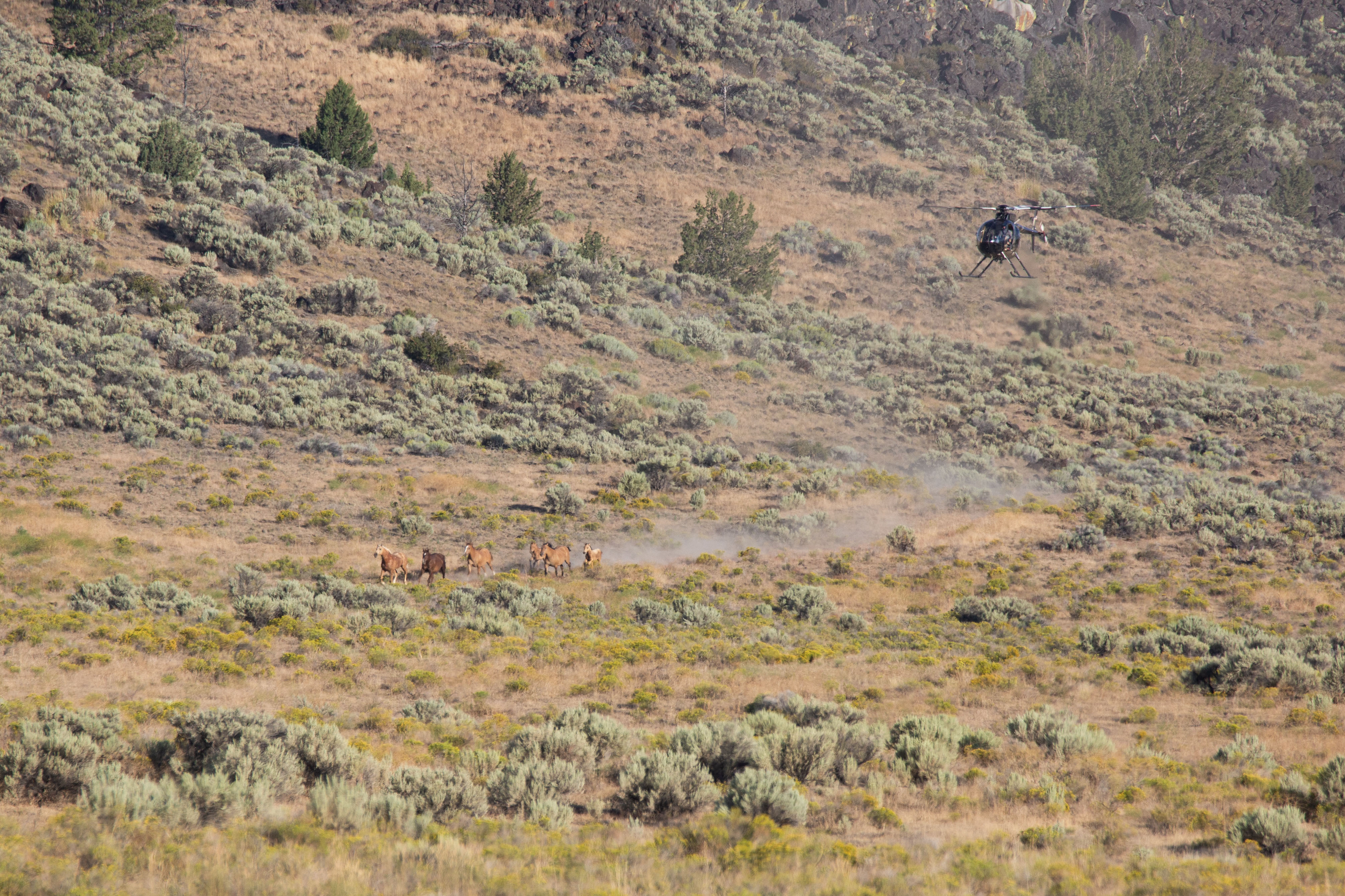

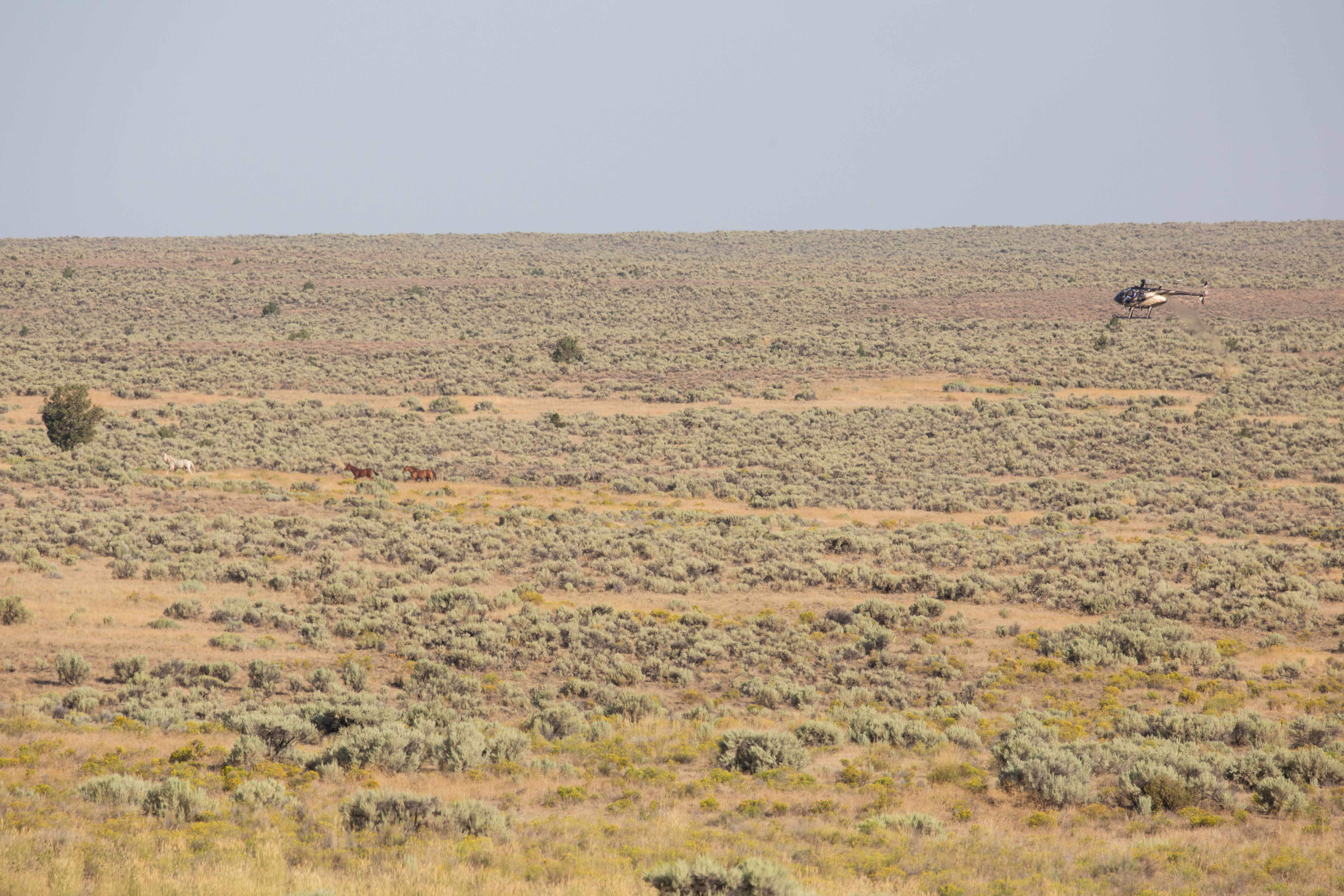
At 8:00 am, I noticed the helicopter to the north, behind a ridge. A few minutes later, we saw that he only had three horses with him. They came down the valley at a light trot while the pilot maintained a good distance from them. As they got closer to the trap site, the horses became suspicious and slowed down to a walk. The pilot managed to inch them closer to the jutes where the judas horse was released, but they ended up turning around. At 8:30 am, the helicopter decided to let them go.
For today, the roundup concluded, and they will be moving the trap site to a different part of the HMA.
August 14, 2023: 136 Mustangs Captured
Today we met BLM at 4:30 am at the BLM office off of Hwy 20 in Hines, Oregon. It took us around 45 minutes to get to our observation spot for today. We had to drive in and park our vehicles on private land to get access, then walk a short way to cross the fence line onto the HMA.
3 other members of the public were on site. Temperatures ranged from low 60s to high 80s and clear skies. We had a somewhat slow start as they were still getting equipment and trailers in. About 35 minutes after sunrise the helicopter was in the air and started looking for the horses. It didn’t take him long to find large numbers.
At 7:10 am we noticed the pilot with a very large group (estimated about 50) out in the valley to the northwest of us. The pilot stayed way back while steering the horses closer to the trap. This way they were able to travel at their own pace at a light canter/ trot. The large group disappeared behind the ridge for a while. Then the pilot came around the corner with the first half. They were very cooperative and easy to guide within the jute.
Before entering the catch pen they slowed down and hesitated to go forward. But with a final push from the pilot and people with flags, they entered the catch pen. The remaining horses had scattered into 3 groups. He managed to reunite some of them and made two more runs before they all entered the trap. Again, I noticed the horses slow down right before entering the catch pen. I assume it was the way the panels bent around.
By 9:10 am three trailer loads had left to the corrals. While the horses were all getting loaded, the pilot had located yet another very large group (estimated about 55-60). At 9:15 they were seen coming from the northwest. As they were getting closer to the trap they split into several groups again. The pilot brought in a very large portion, they slowed down again right before the catch pen. The pilot did a final push while staff with flags also encouraged them to move forward. After this run, a small band was seen going up the rocky ridge while the pilot was pushing another band closer to the tap site. He managed to bring them back down and reunite them with the other band. At 9:35 they all entered the trap site.
Another band of 6 horses was seen running in the opposite direction and the pilot decided to leave them (for now) as he had to refuel and wait for trailer loads to go out to make room for more horses. The band was lingering in the valley/walking and eating. An hour later at 10:35 am the pilot came back out to get the small band of 6 horses.
Note: the horses had been close to the trap site before attempting to push them in a second time (an hour later) At first he was able to move them close to the jute.
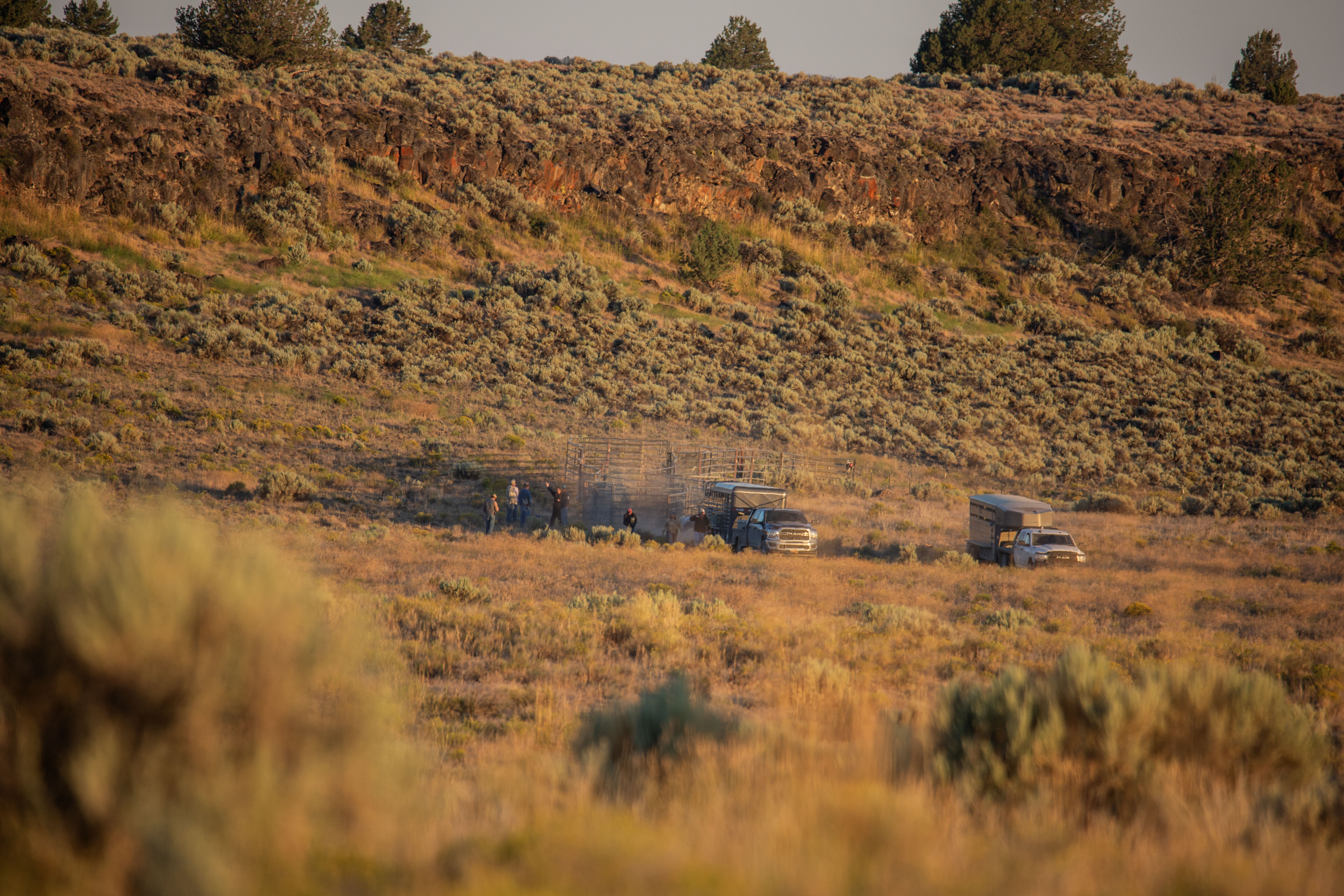
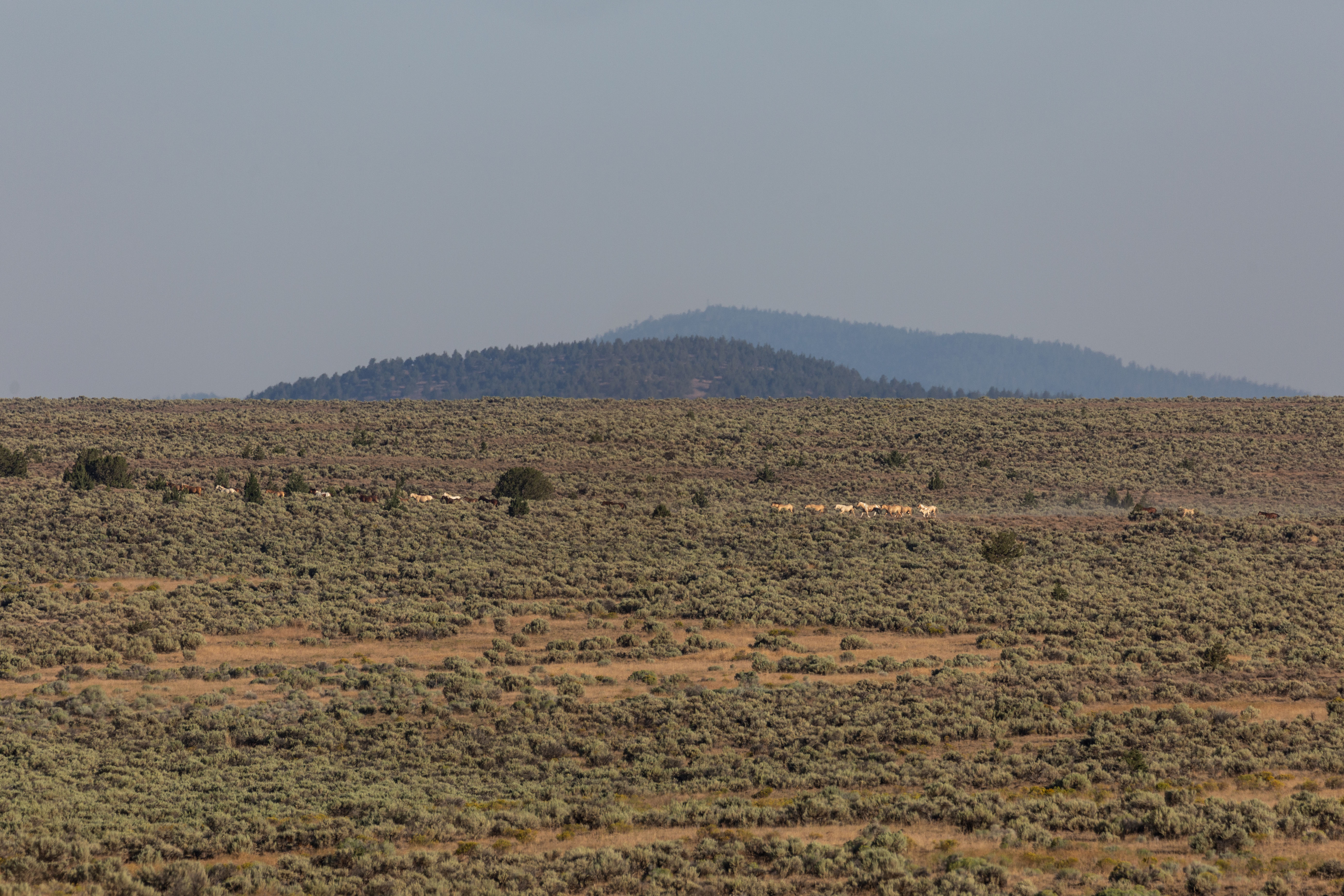
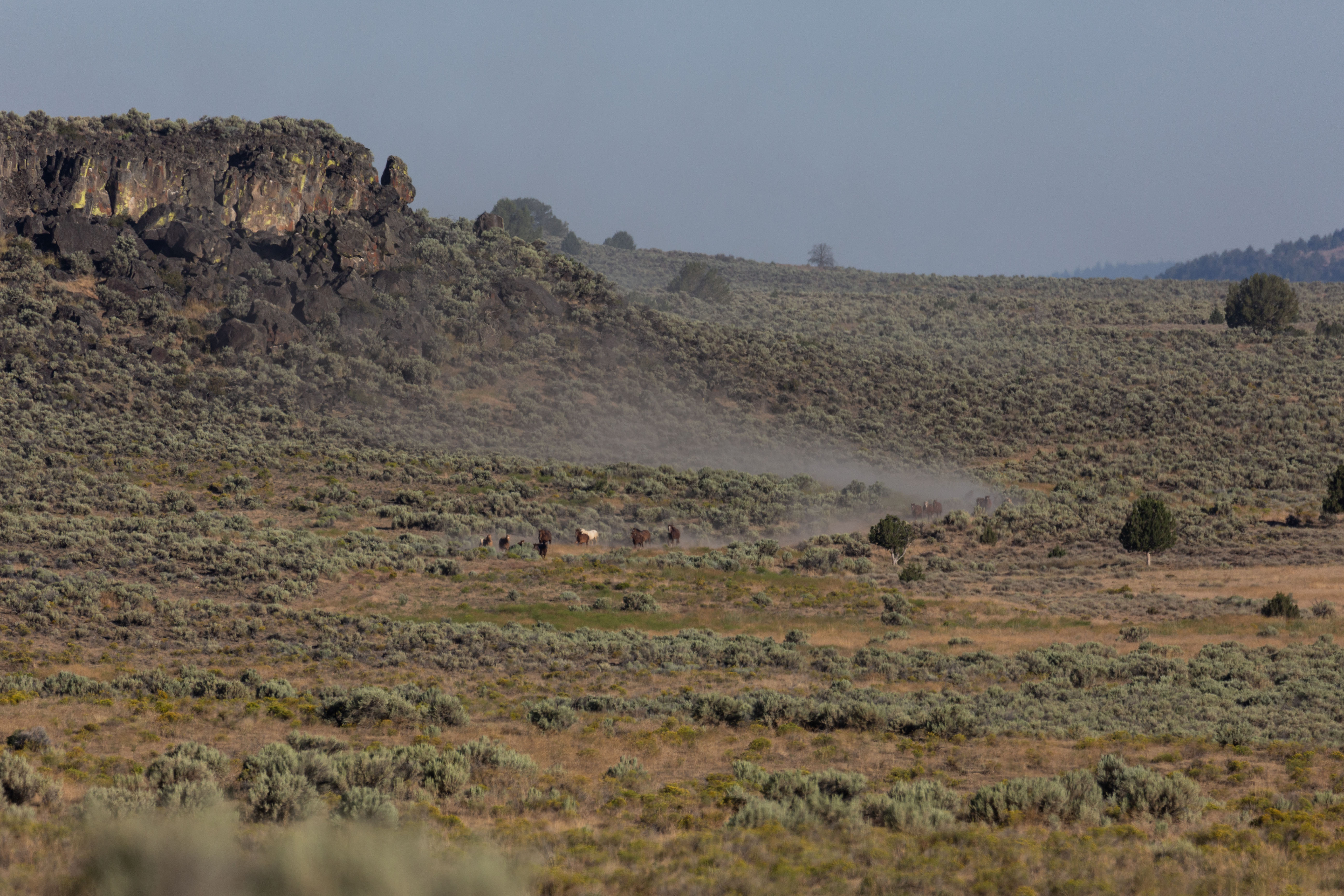
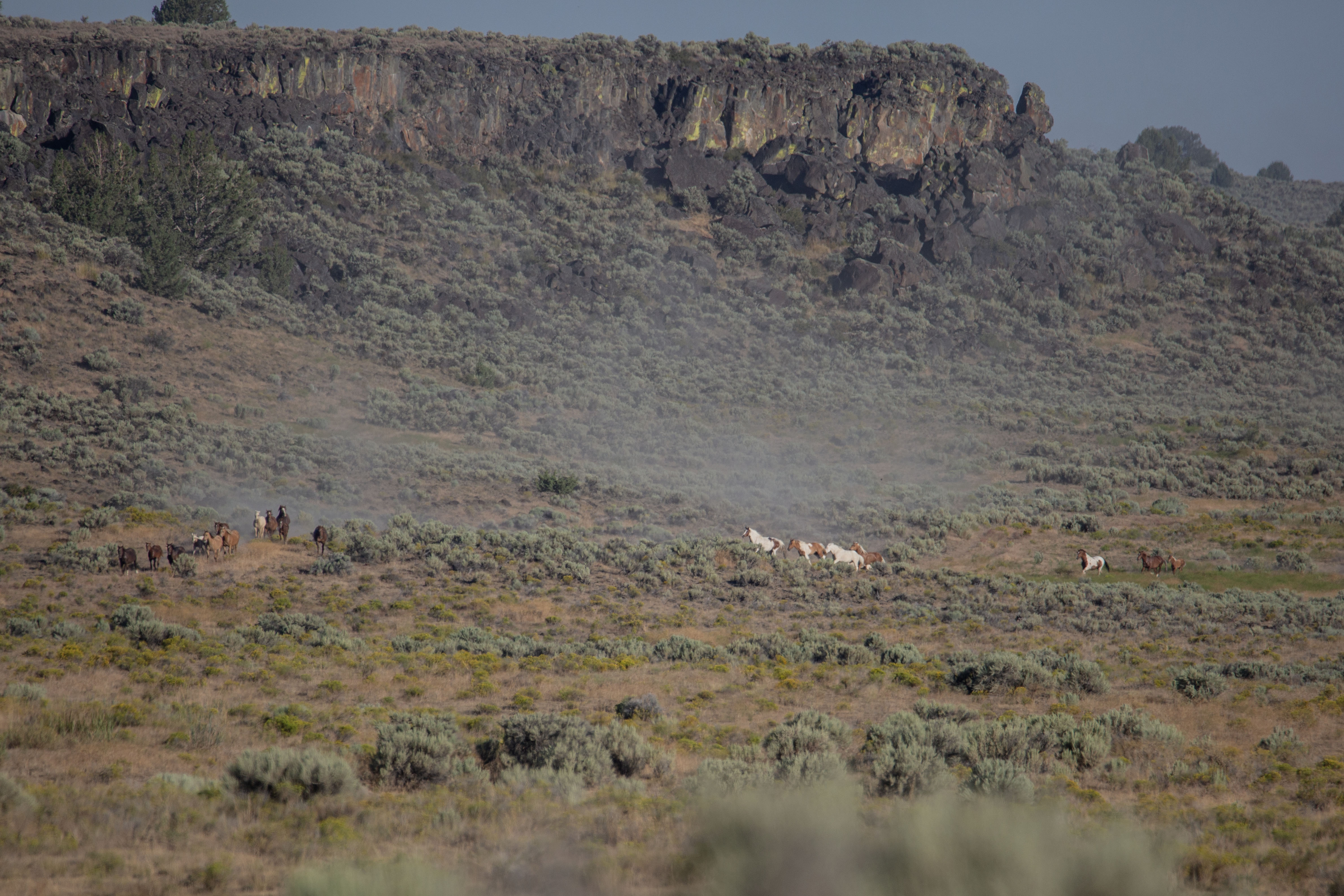
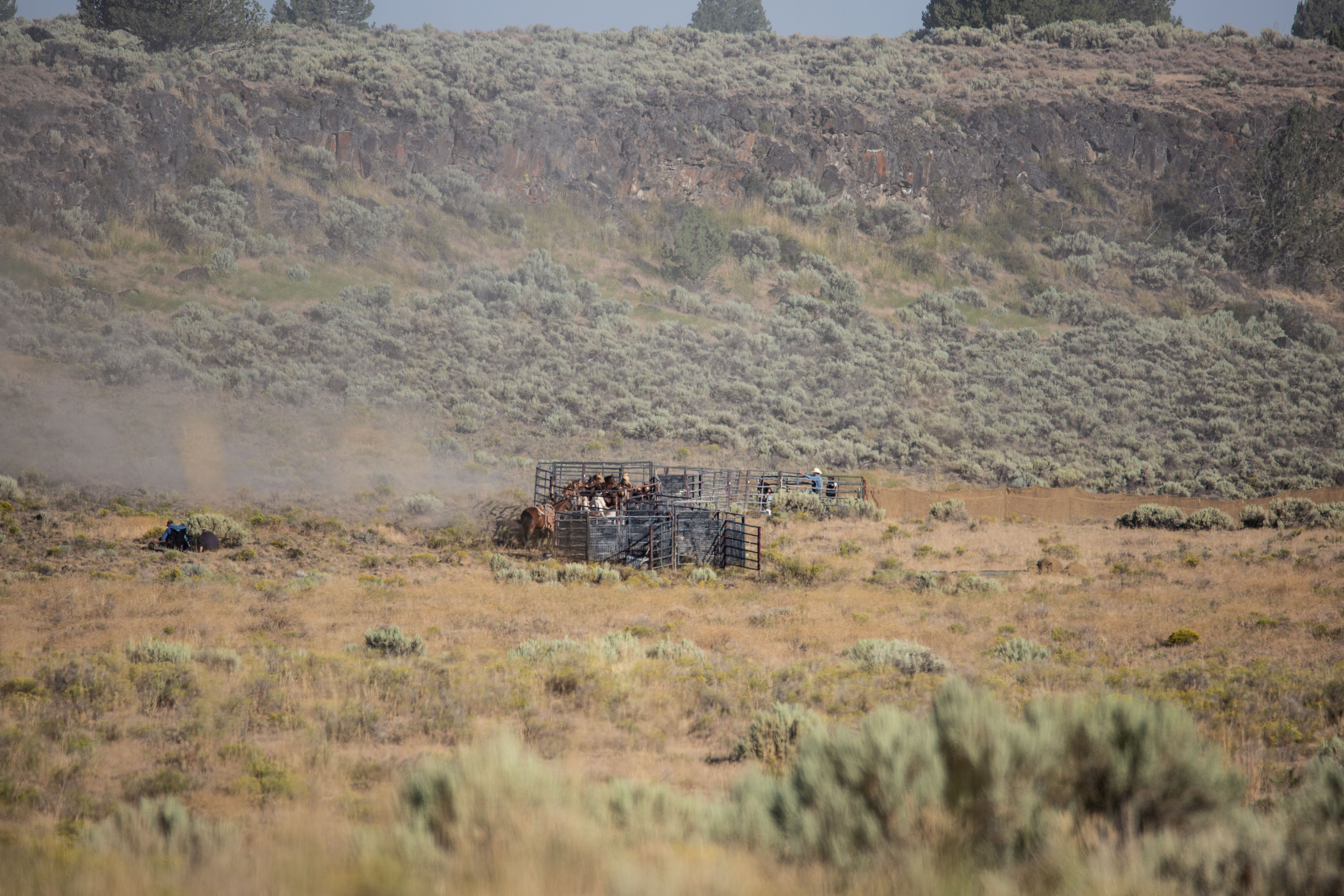

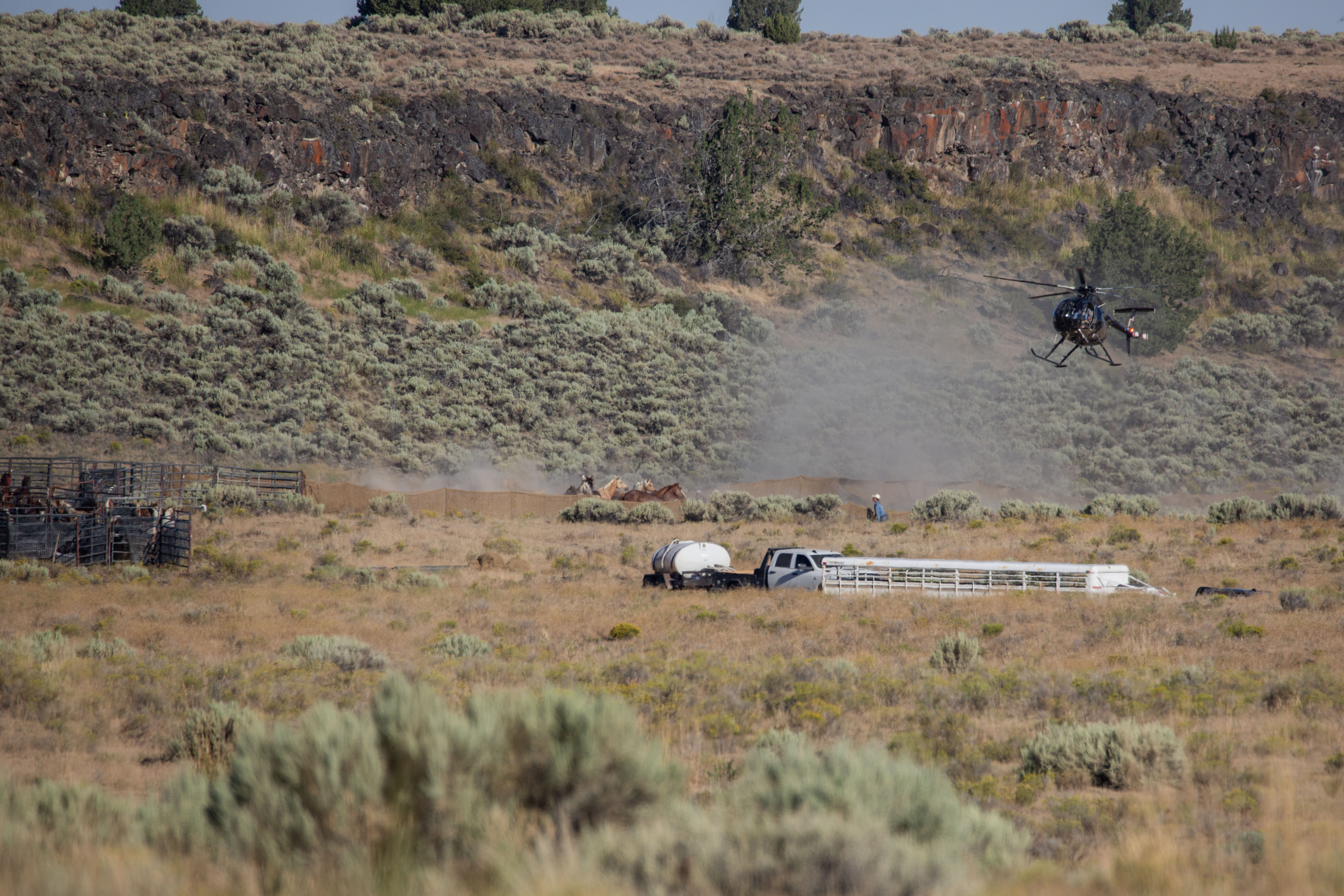
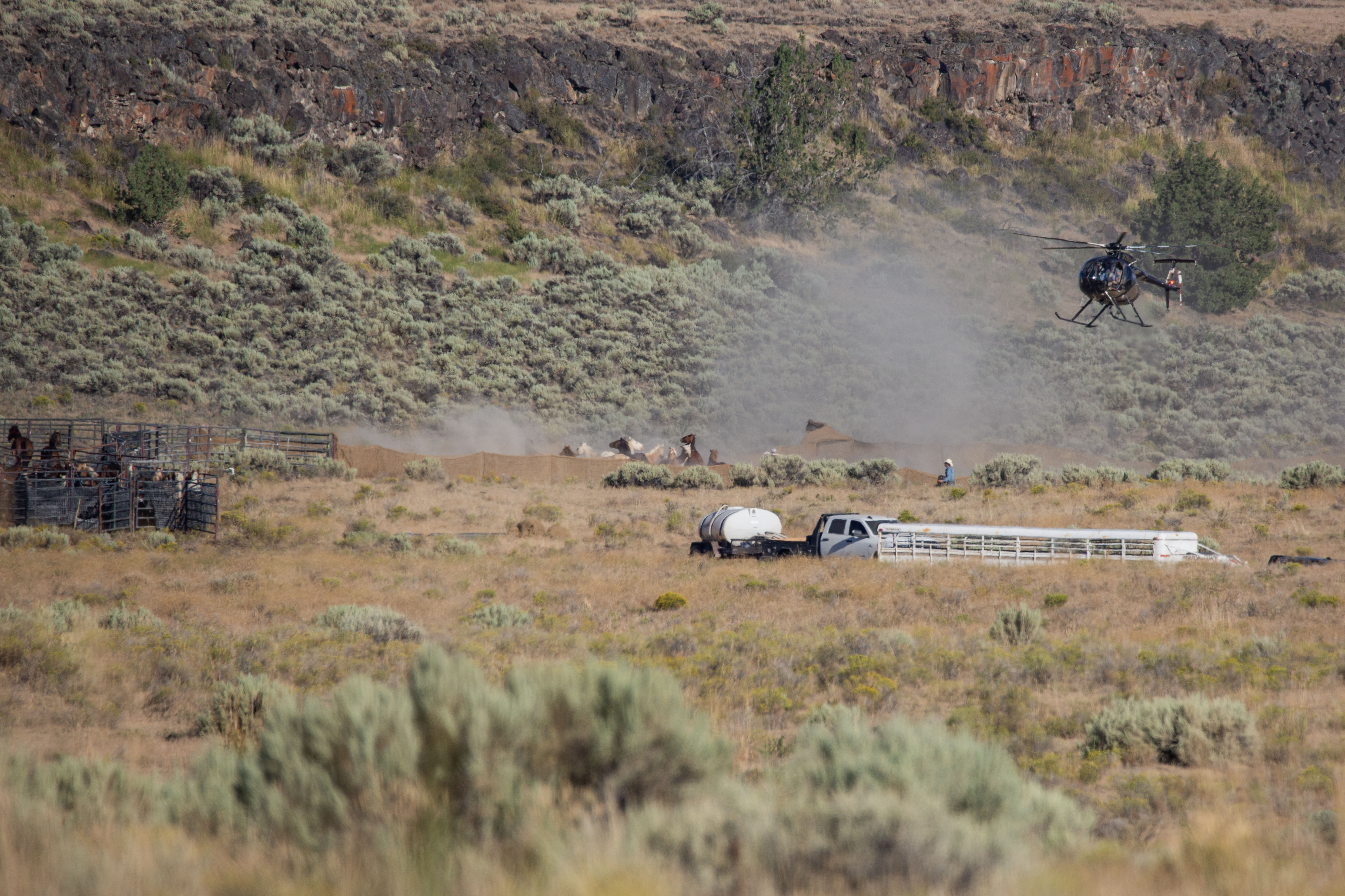

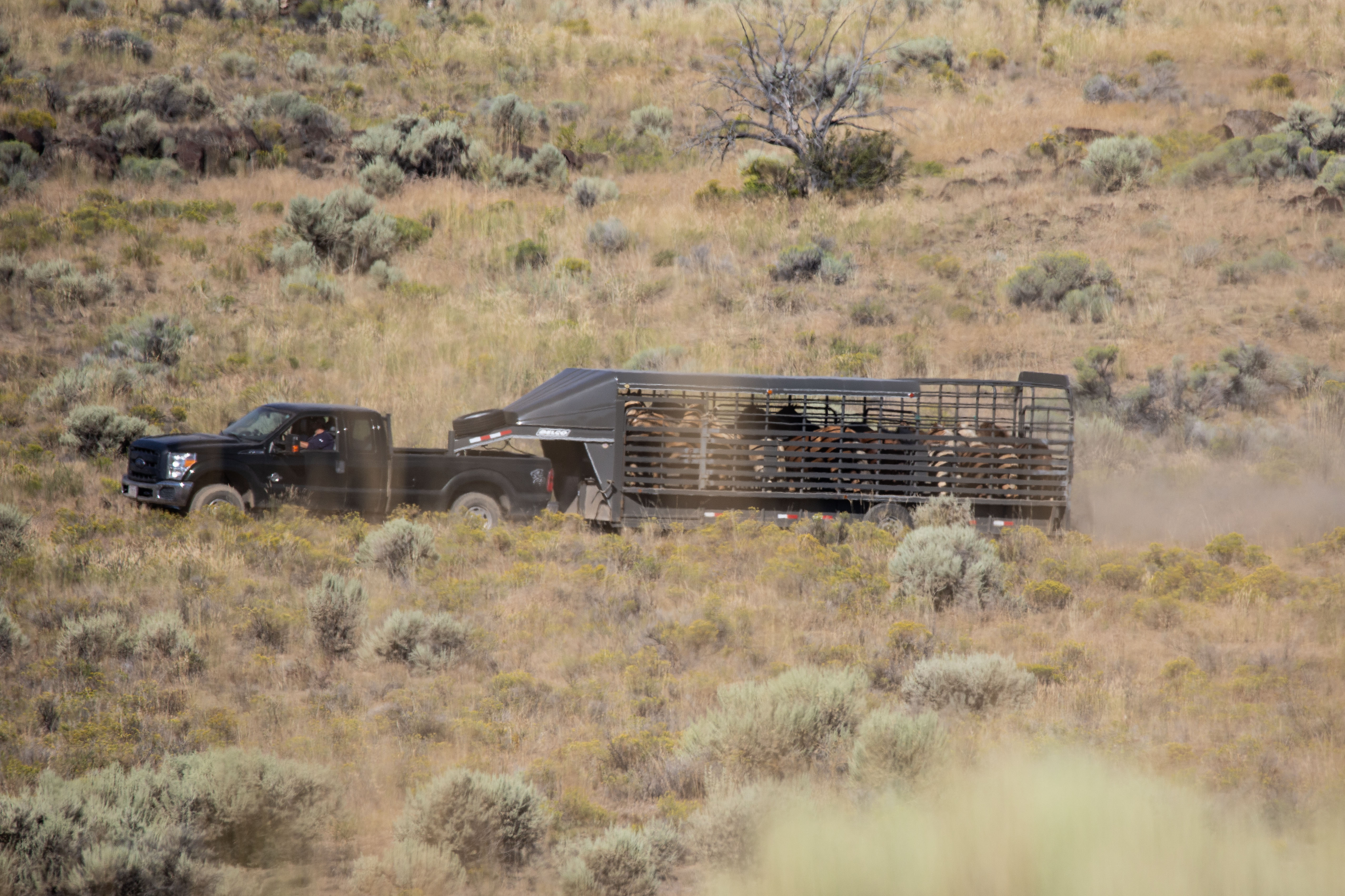
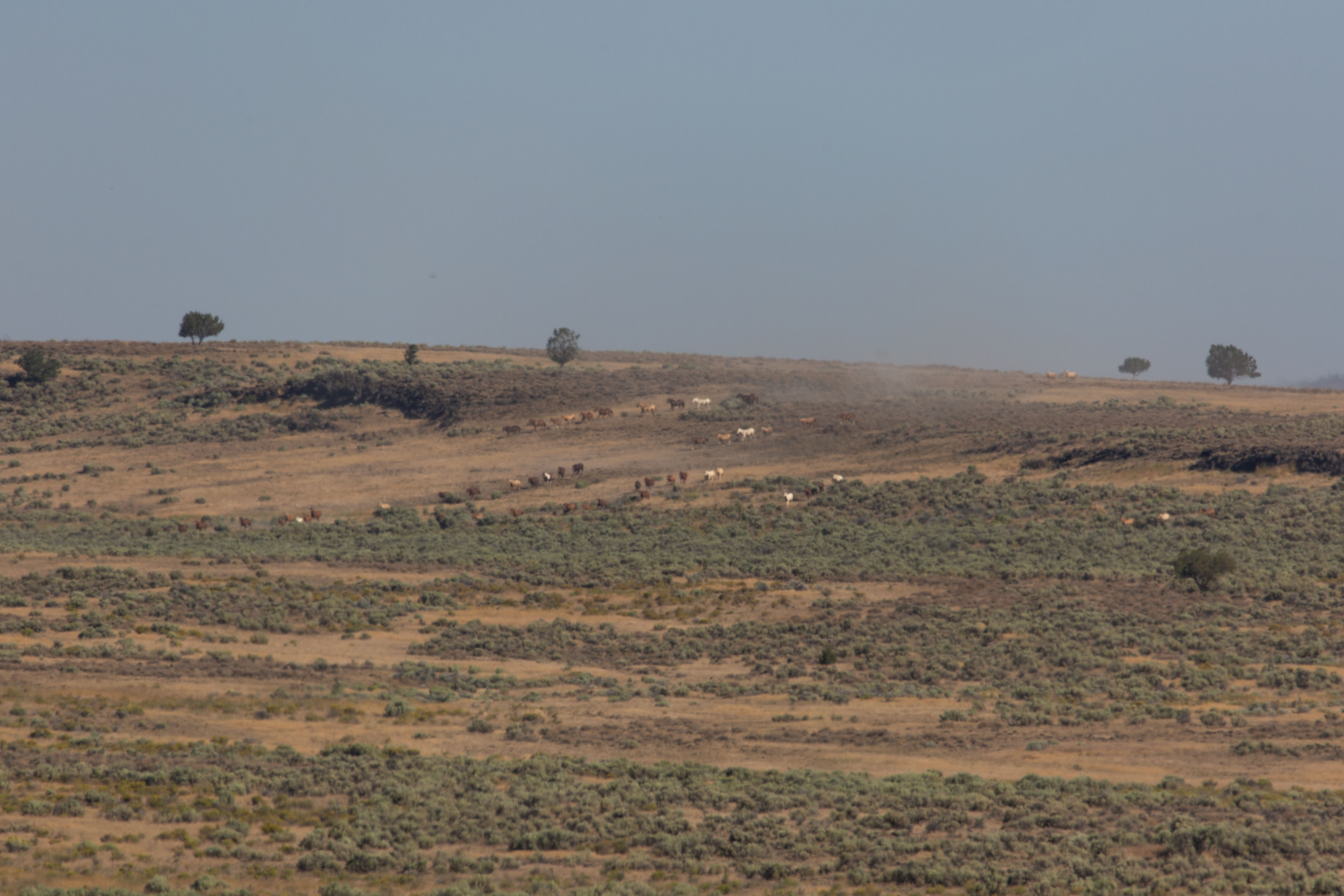

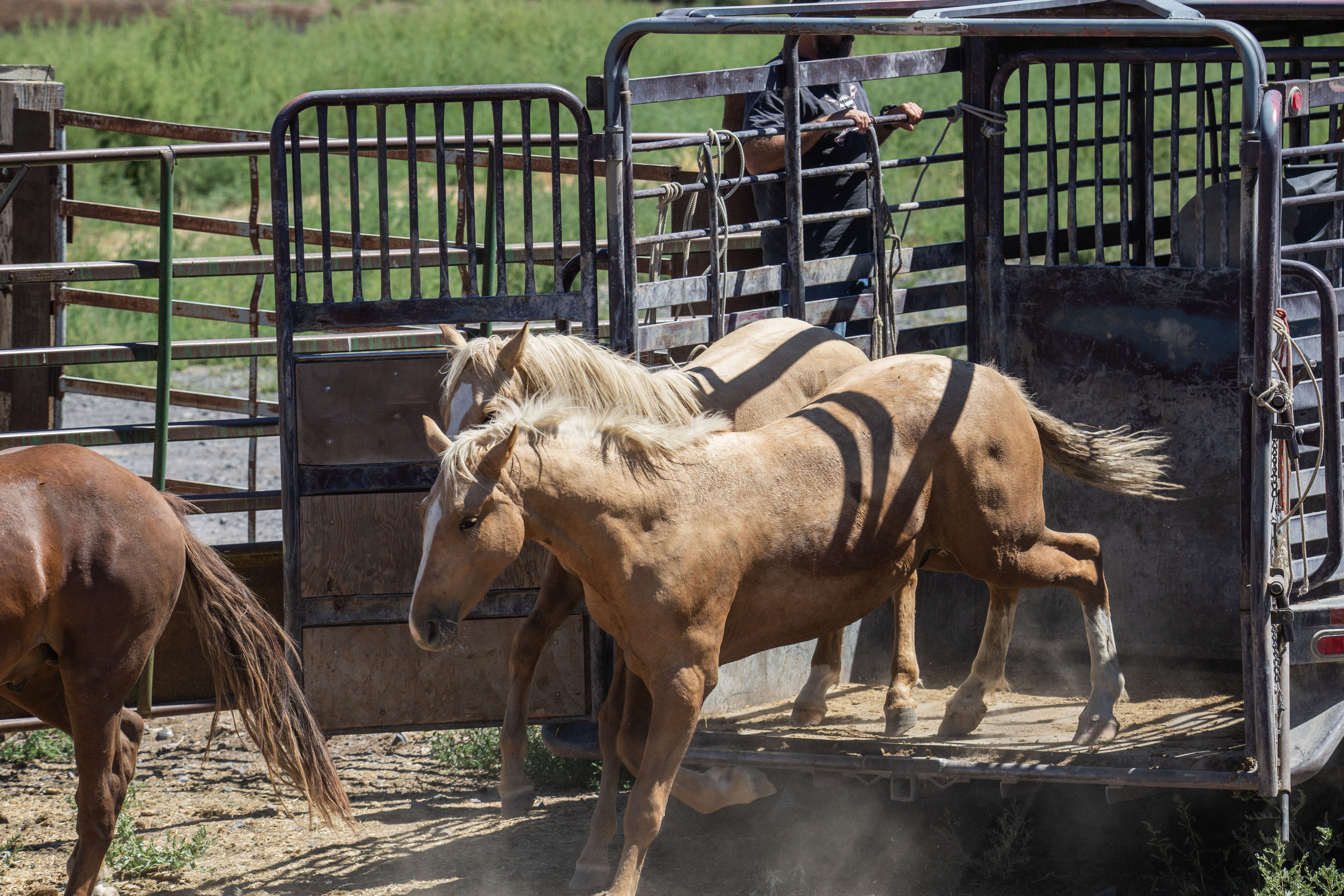



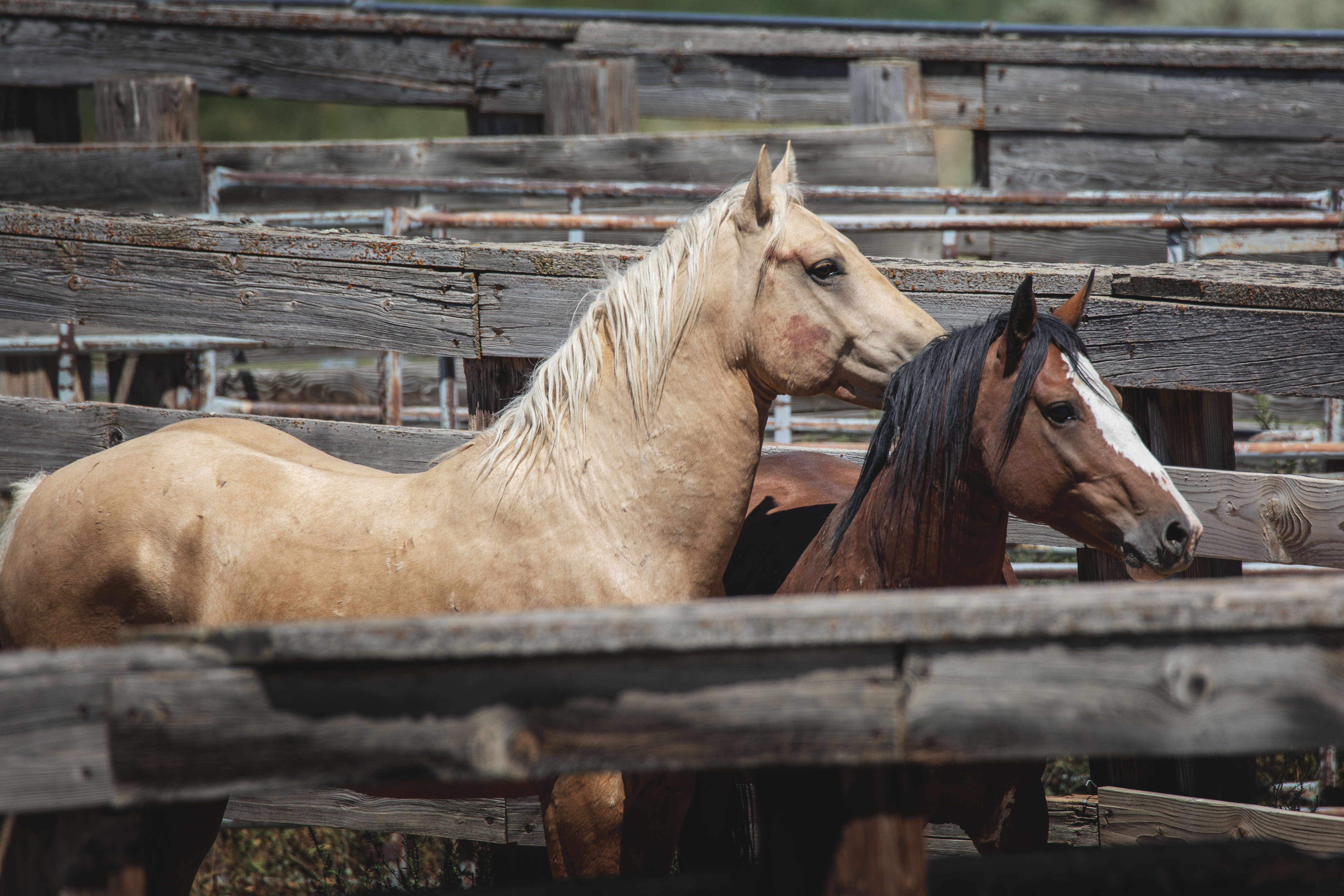




But nearing the trap site they turned around, they knew exactly what was going on. It wasn’t a matter of the horses being tired and not wanting to move, in fact, I saw them push through the helicopter several times. They were not running fast by any means, instead, they would just stand still at times, make sharp turns, and break away from the helicopter running in any direction but the trap. This resulted in a 40-minute-long battle. After 30 minutes or so, the pilot had managed to inch them closer into the jute by continuously flying low and pushing them non-stop. Once they were within the wings we couldn’t see much of what was going on. But for at least 5 minutes the pilot was hovering very close over them in the jute, eventually kicking up an insane amount of dust obscuring all visibility.
All while using his sirens once they got really close to the catch pen. But then I saw the band make one more move and turn around. And after a 40-minute-long battle, the pilot finally decided to give up and left to find other horses (at 11:15). Within 15 minutes the helicopter had found another band of 13. At 11:30 the horses entered the trap site and the roundup concluded for today. We left observation while they were still loading, that way we could watch the unloading of the trailers at the corrals. Since the BLM wild horse corrals were such a short distance away, there is no need for temporary holding at this roundup. The trip from the trap site to the corrals was estimated to be only a 45-minute drive.
I observed 3 to 4 trailer loads come in from a public viewing area. They backed up the trailers to a large paddock. The horses coming from the trailer were in great condition, did not look extremely stressed nor were they sweaty. I was informed they were immediately vet-checked and vaccinated before moving them into the larger corrals. The BLM staff on site is very professional and caring towards the horses. Public viewing/auto-tours is available during the weekdays from 8 am until 3 pm.


